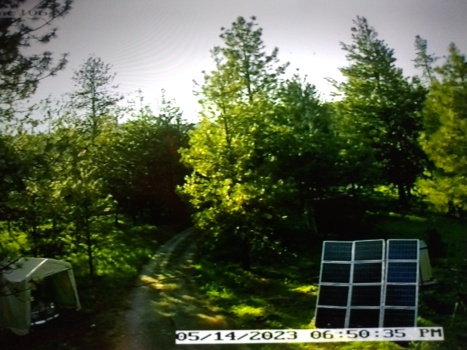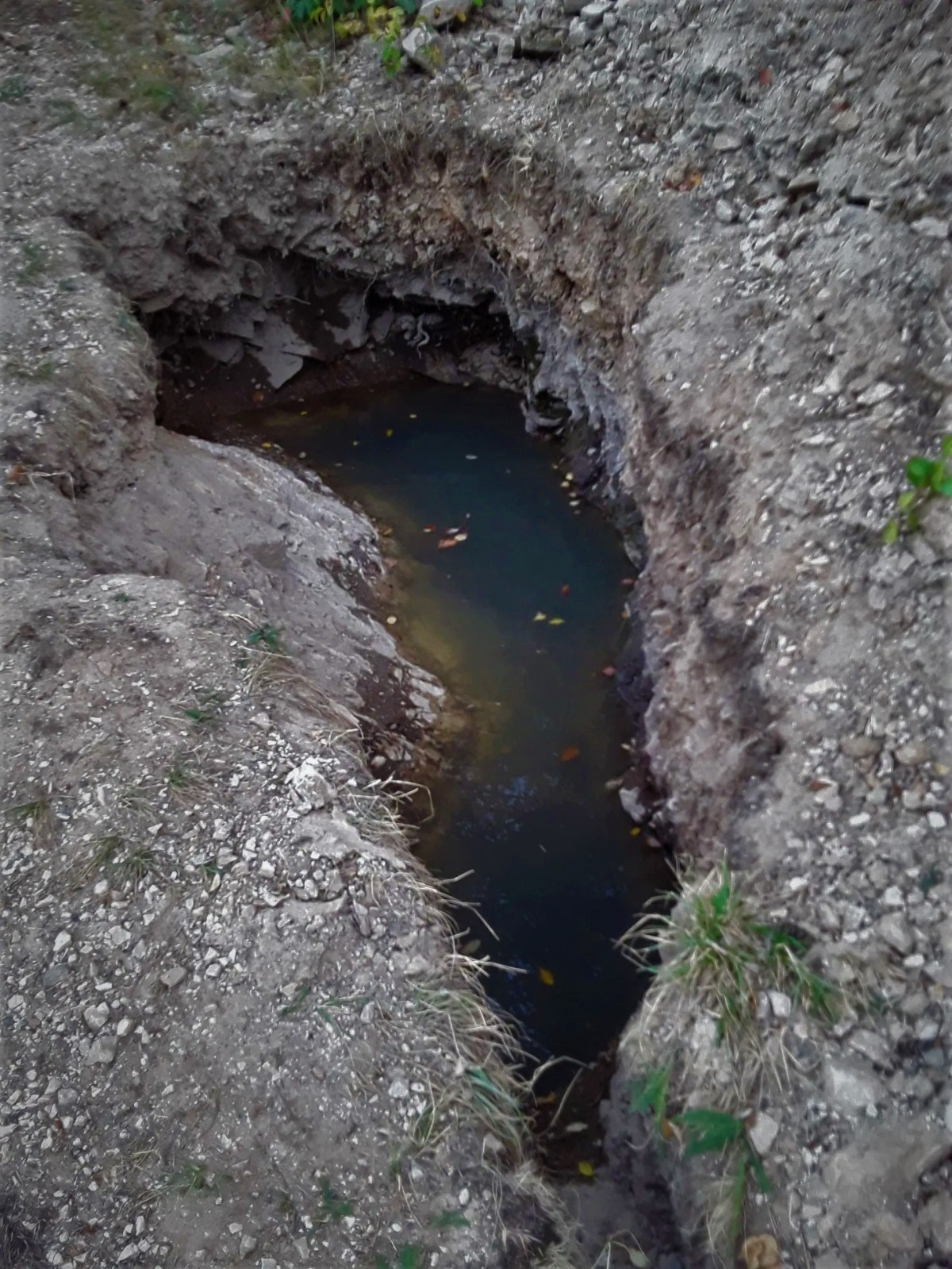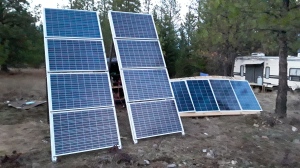When we first saw the property, it was late August and everything in eastern Washington was very dry. Knowing this, we were trying to decide how we would get access to water. We considered a large tank and delivery. We asked our agent about a well and she said maybe a few hundred feet down we might find water.
I found water at about two feet.
The day we arrived, I explored every square inch of our newly acquired 3.7 acres and looked for likely spots for water. I had been online getting tips so I looked for green among the brown and signs of winter run off ditches. I found one spot on a hill on the property that actually had some green grass growing at that time of year. I decided to dig there.
I can’t remember how long it took; just a couple of hours I think, as there was solid rock right at the surface, but I chipped and dug away and to my disbelief, the soil turned damp and then… there was actual standing water.
I had found a spring.
It could have been runoff but all signs pointed to spring water as I continued to go a little deeper. It turned out that the whole hillside was either one massive spring with a multitude of outlets or tons of springs all over. Some sources were larger than others but you could almost dig anywhere up there and find water coming up out of clay tubes and cracks between rocks.
We dug a tiny trench down the hillside to a larger holding hole we had made. We used our pump to get the water into the trailer, adding a touch of bleach for safety. It’s been a wonderful source of water since then.
All through the winter we got a pretty good flow but it almost dried up over summer. I ended up pick axing my way down through bedrock and heavily compacted rocks and dirt to carve the spring deeper during the summer months but we had water all year long.
Come fall, we called contractor after contractor to dig a shallow well to make things official but they were all booked months ahead. Faced with another winter with an amateur setup, we added a sediment filter to run the water through before going into the trailer. We had to deal with frozen hoses too.
While I was chipping away at the bottom of the spring, I discovered something interesting.
I began to notice slightly hot spots in places at the bottom. It was coming up through a crack between the bedrock and the looser material. I felt around day after day with my fingers trying to decide if this might be geothermal activity.
Just a month or two earlier, while looking at geological maps for prospecting purposes, we discovered that not only were we situated in the middle of a series of faults but that, by the look of things, we might be sitting right on top of one! That would explain the springs – and possibly geothermal activity.
I called WSU’s (Washington State University) geology department and spoke with a geologist there. He seemed to think it might be runoff but trust me, I have a hunch something else is going on down there.
We hope to have someone take a closer look when we have an official water sourced constructed.
We watered our garden all summer by siphoning through hundreds of feet of garden hose to the holding hole, then pumping it out to the sprinkler. Pretty nifty huh? When we dug the garden, we routed the water into the area and created a temporary mud pit to soften the clay rich soil to a point where it was easier (bit still almost impossible to turn).
Our spring is the heart of our property. It represents life and hope for us and it’s the place I go when I need to think or just cry. It’s my place – and the yellow jacket’s. I had to share the hole with them all summer long.
We managed to get along, somehow, and everyone got their water.





 It lasted for months; the block of ice that held most of our dishes captive.
It lasted for months; the block of ice that held most of our dishes captive.





